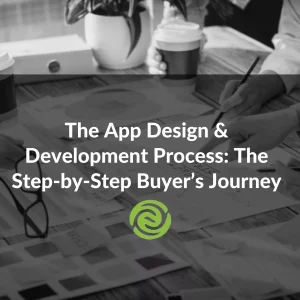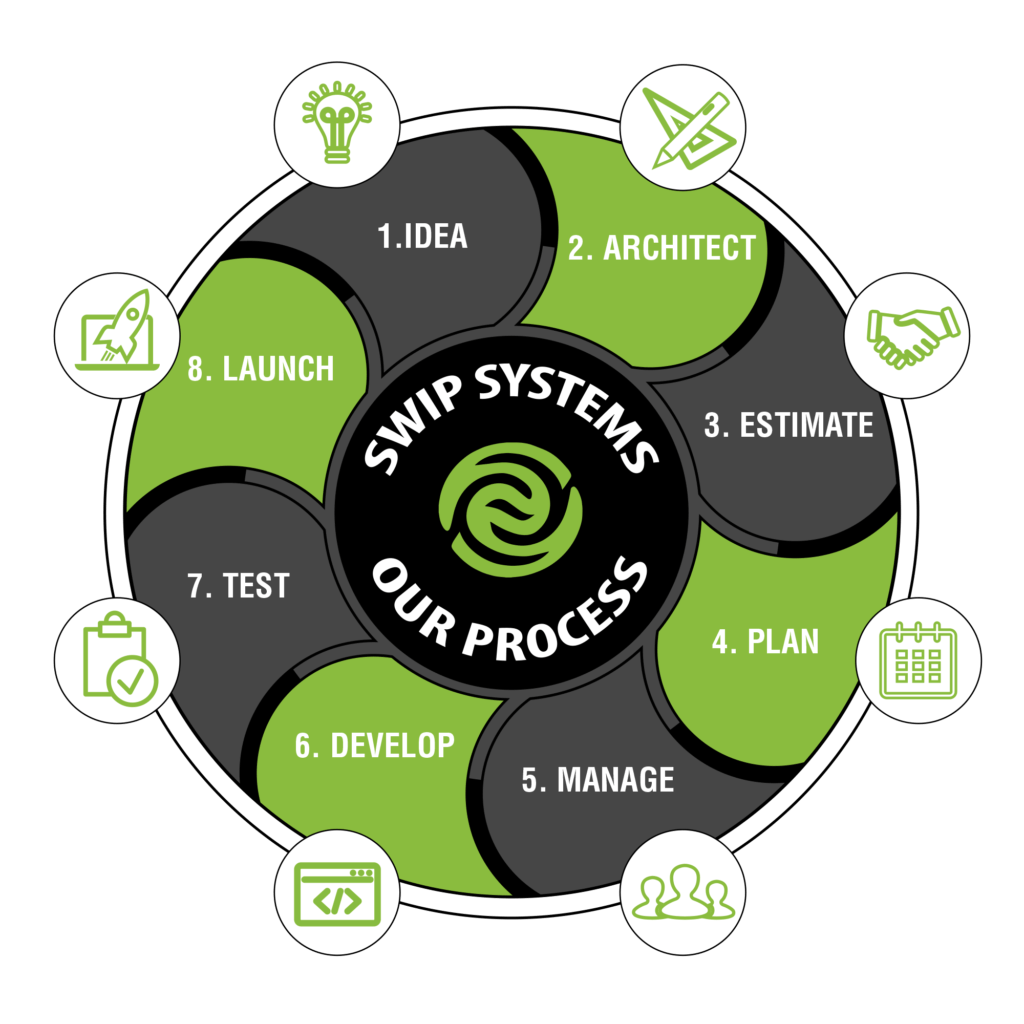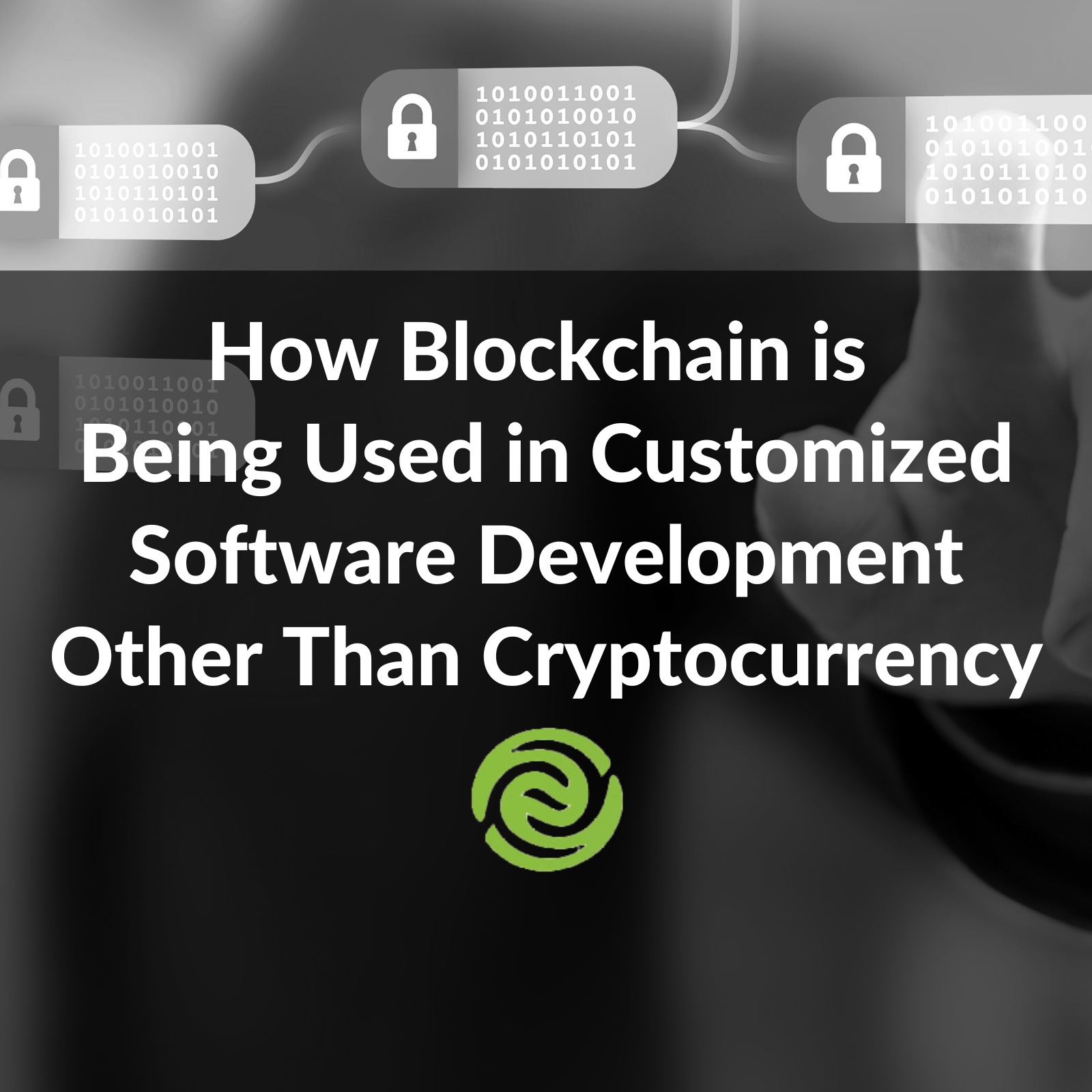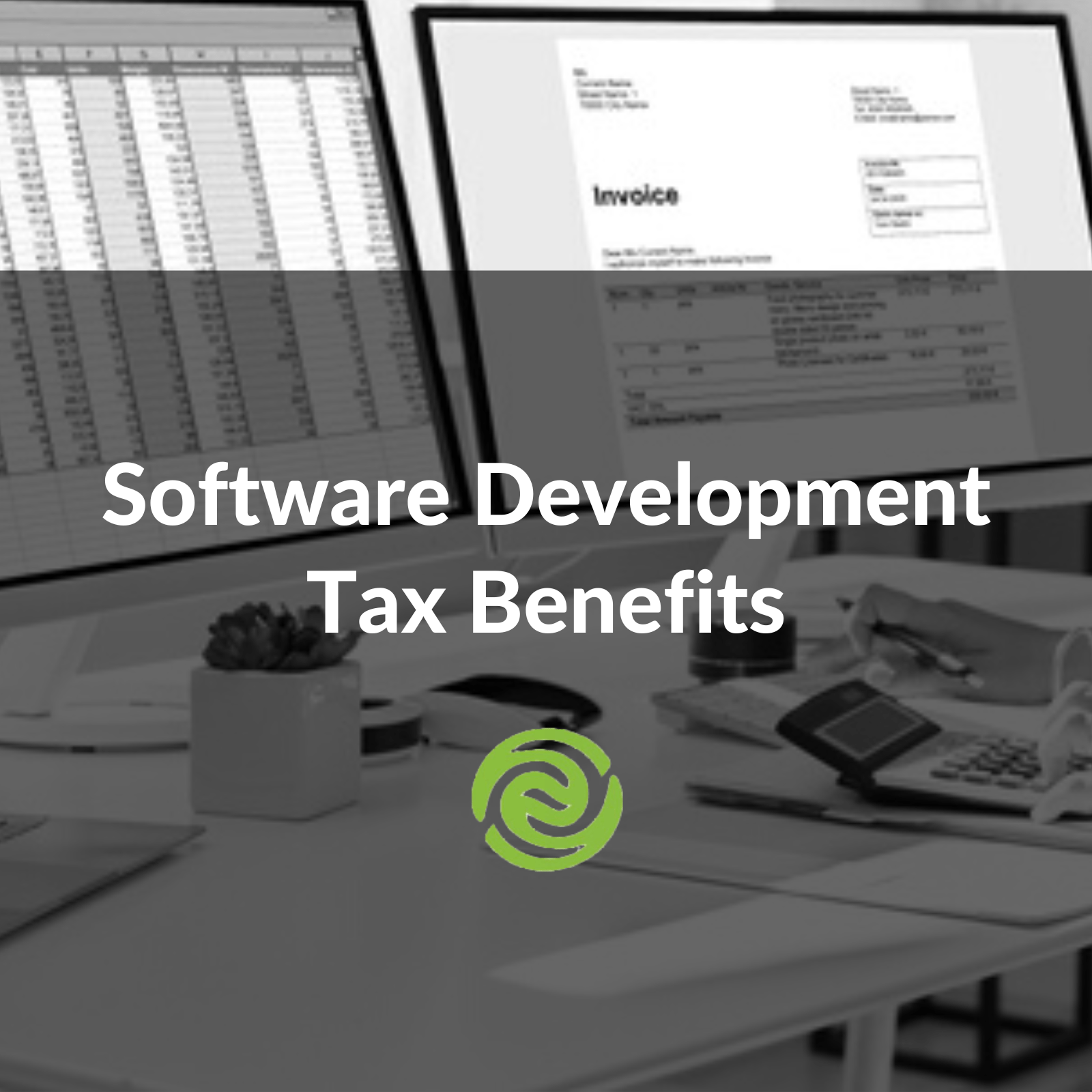You may have heard of Blockchain for cryptocurrency, but did you know this technology also…
The App Design & Development Process: The Step-by-Step Buyer’s Journey
When you see a need in the consumer marketplace or within your business and decide you want to fill that need with an easy-to-use software application, where do you start? What does the app design and development process look like and how does the journey begin?
 In this blog, you’ll travel through the app design process, one step at a time, and discover project phases you may not have realized were important. We hope you use it as a map on the road to building the product or solution you envision and getting your application into the hands of your users.
In this blog, you’ll travel through the app design process, one step at a time, and discover project phases you may not have realized were important. We hope you use it as a map on the road to building the product or solution you envision and getting your application into the hands of your users.
Here’s a quick rundown of the app design and development process:
- Think big about your app or software idea, expand on your napkin sketch
- Get feedback from users about your app or software product
- Flesh out your mobile app, web app, or software concept
- Define your budget, determine costs
- Identify how you’ll fund the project
- Determine who can write the application
- Protect your intellectual property (IP)
- Find a software development partner
The App Design Process Steps: From Concept to Development
Are you ready to take the first steps toward building your custom mobile app, web app or software product? Then let’s look at the eight app design process steps, from concept to development, and get your idea on the road to becoming a finished mobile app, web app, or business automation software.
When clients come to us with excitement about their ideas, it always reminds me of a valuable lesson in a fun movie we used to watch with our kids called Robots. Check out Bigweld’s advice: ‘when you see a need, fill a need.’”
Step1: Start the App Design Process by Thinking Big About Your Mobile App, Web App or Software Idea
This part of the app design process – the idea stage – often begins as a napkin sketch design or a doodle on scrap paper. To grow the sketch into a more detailed mobile app, web app, software product, or business automation product, spend time thinking big and conceptualizing. Write it down, draw, and do whatever it takes for you to make it feel real.
Don’t limit your app idea based on what you think it will cost or the difficulty of getting it done, that can be addressed later. Let your imagination run but remember to focus on the users’ needs, not just what you want to build. Also, keep in mind, many end-users don’t know the full scope of what they need until you show them or provide a complete solution, so going above and beyond the immediate need is a good thing.

Step 2: Get Feedback from Potential Users About Your App or Software Product
Now that you have a more detailed app or software idea that feels real, ask trusted connections how they feel about it (those who will not steal it) and try to get honest feedback. Gaining real-world input on how you can improve your app or product is priceless during the app design and development process – before you spend a lot of money creating it only to have to make sweeping changes later.
When you’re close to an app or software product or concept, it is easy to assume something is there when it’s not or that it’s user-friendly when it isn’t. Just don’t take it to heart if they call your baby ugly … it’s still incubating.
- Engage friends, family, coworkers, peers, mentors, and business partners in your idea.
- Find out if your app or software solution solves a top-of-mind problem for them with ease.
Remember, not everyone is a dreamer, and some may not be able to see your vision. Don’t let them dissuade you. Use the input to fuel improvements in your app design, not crush your ideas and dreams.
- It’s also wise to meet with industry experts and ask them what they think about your idea.
- Draft a non-disclosure agreement (NDA) or look for one on the web for them to sign. This protects your idea and keeps your intellectual property (IP) confidential.
Depending on how concerned you are about sharing your app or software concept with others early on, you can always copyright, trademark, or patent it first. Keep in mind that when you legally protect your product, you need to have the details fairly complete, so that all aspects of your product are covered by the trademark, copyright, or patent. See Step #7 to learn more about this.

Step 3: Flesh Out Your Mobile App, Web App, or Software Concept
You’ve conceptualized and talked to others, and now it’s time to get your mobile app, web app or software product functional. We call it “fleshing out your napkin drawing.” At Swip Systems, we recommend using a tool like Lucid Charts or Google Slides to map out the process flow and begin laying out mobile screens or web pages.
This is also when you start defining your Minimum Viable Product (MVP) by focusing on initial design and functionality, rather than getting so in-depth with features and extras that it muddies the waters. Creating an MVP reduces your likelihood of failure and promotes future growth through agility, as well as competitive differentiation. The idea is to find the sweet spot between offering “just enough” but not the whole kit and caboodle.
Step 4: Define Your App Design & Development Budget, Determine the Cost
Defining your app design and development budget and determining the cost of the finished product is one of the most challenging steps. We often help our clients with this part of the process due to the fact that when it comes to software, the devil is in the details.
How much time and effort you and the developer need to spend on a mobile app, web application, or software solution depends entirely on what you need it to do. Simply put … the more the app needs to do, the longer it takes to build, the more it will cost. Be sure to read our page The Cost of Custom Software Development Solutions for more detail.
Step 5: Identify How to Fund the App & Software Development Process
By now you should have an estimated range of what your app or software product will cost and if it’s within your budget. Depending on if your product is for internal or external users, this may influence where the money comes from to design, develop, and build your custom app or software application.
Internal use: If your mobile app, web application, or software product is for internal users at your organization, i.e., software for business process automation, identify where the funding is coming from.
- Is funding coming out of your current or next year’s budget?
- Can you get approval for a capital expenditure?
- Are you the decision maker that can decide to move forward?
You may need to get creative, but rest assured, if your app is a solid product that increases production, company culture, and customer satisfaction, the ROI should be there.
External market use: When your mobile or web app is for an external market or consumers, the same rules apply. Identify funding sources.
- Will you use your life savings or cash in investments?
- Will you borrow from a lender?
- Is there a chance you’ll need outside investors, crowdfunding, or capital from friends and family?
- What will you charge for the mobile or web app to produce an ROI?
If you’re raising funding, get ready to pay for plenty of lunches, happy hours, sporting events, and maybe even a perk or two. You are going to be wining and dining with kinds of people. Remember that with family, you still have to see each other at Thanksgiving dinner.
A word of advice on funding – be careful who you jump into bed with – not all business partners, lenders, and investors are created equal. You’ll need to make sure you retain your idea and don’t get bullied into changing it to suit someone else’s whims.
Step 6: Determine Who Has the Capability to Write the Application
This step can be tricky as well. You’ll need to do some research to find out which technology might be best for your product, then determine who can write the application.
This determination will come from talking with your developer friends, asking the Google gods what they know, and setting up meetings with a few software developers to get a feel for who fits your vision and who is reputable when it comes to finishing the project. We have a quick rundown on how to choose the right software and mobile app partner in our blog: Why Enter into a Strategic Partnership for Mobile and Web App Development.
WARNING: DO NOT believe that your friend is going to do this for you on nights and weekends – this will NOT happen – you’ll be waiting a very long time for a usable application, and most likely jeopardize your friendship.

Step 7: Mobile App, Web App & Software Patent, Copyright, and Trademark: Protect Your Intellectual Property (IP)
Intellectual property (IP) is the legal, exclusive right to your distinct creative design; nobody else can copy or reuse your design or product without your permission. Make sure your mobile app, web app, or software IP, which includes the code, data model, design, data, functions, logos, taglines, and everything else, is owned by you.
You can protect your IP in one of several ways: with a copyright, trademark, or patent. Each of these has its uses, but a copyright, which is the fastest form of legal protection, is often a good place to start, and then move through the trademark and/or patent process as needed.
- Meet with an IP attorney; find one through family, friends, or business peers.
- Get the paperwork started for protecting your IP as soon as you can.
- If you think you want a patent, an attorney will help you determine if your product or certain functionality within your mobile app or web app is patentable.
- Patenting technology is difficult to achieve and can be very expensive.
Step 8: Find a Software Development Partner
When choosing an app and software development partner, there is an assumption that it’s less costly to use an individual over a software development company. However, a company typically has more resources so there is a cost and time efficiency that isn’t available with one person who’s trying to work on many projects at once. Besides, what are the odds that a single individual is a great architect, designer, project manager, software developer, database developer, QA person, and accountant all in one?
Choosing a development partner should be based on many factors, not just cost.
- Make sure the developer has the right credentials and is a developer vs. a programmer.
- What is their level of experience – have they been at this for years?
- Look at their portfolio of completed apps. Are they user-friendly? Do you like the way they look, feel, sound, and function?
- When you interact, is it comfortable? Is there rapport?
- Many will say all the right things, but do they know their stuff?
- What happens to your project if the developer or someone on the team is unavailable?
- Is the company or individual financially strong or might they disappear tomorrow?
- Does the company have an established process that they use?
- Ask for several referrals and read reviews.
You’ll usually get a feeling for the developer’s knowledge, responsiveness, and follow-through with just a couple of preliminary conversations and by looking at their software development process. With any type of project work, a solid process by which the project is executed is the only way to guarantee success.
When you choose the right person or team to be your strategic software, mobile or web app development partner, you will learn a lot about your project, benefit from an expertise that can make your finished product even better, and enjoy the freedom to manage it all from a higher viewpoint.

The Bottom Line … With Help From an Expert, Tackling the App or Software Design Process Can be an Exciting Journey
Now that you have a solid foundation and steps to follow when tackling the mobile app, web app, and software design and development process, you can decide to go it alone, get assistance from a single developer, or work with a development company like Swip Systems right from the start. Getting help while you’re in the concept stage can make the journey less stressful and more exciting, and get you to the finish line faster.
Whether you are developing an app to bring to market or an app for internal use, the biggest advantage of collaborating with Swip Systems from the idea phase through strategy, development, product launch, and beyond, is working with a team who has been there before to lead the way and help you avoid all the missteps and mistakes.
You can save a lot of time, uncertainty, and frustration when you work with an experienced software and app developer.
Contact us for a No-Obligation Conversation
Swip Systems loves to help entrepreneurs, businesses, and nonprofit organizations turn their ideas into marketable mobile apps, web applications, and custom software products, and walk through the buyer journey with confidence. Our holistic approach, credentials, and vast experience have helped nationwide clients fulfill their dreams for over 28 years. Contact us today for a no-obligation conversation. 877.377.SWIP







